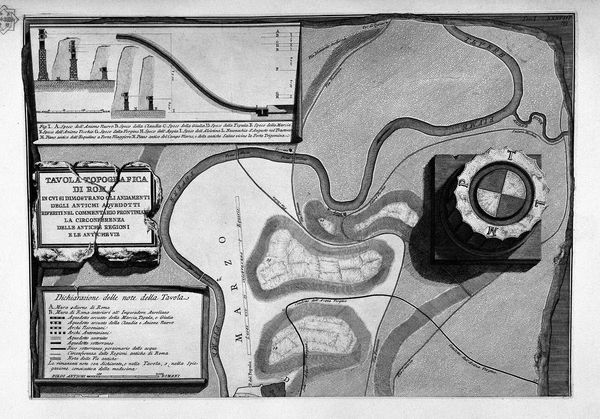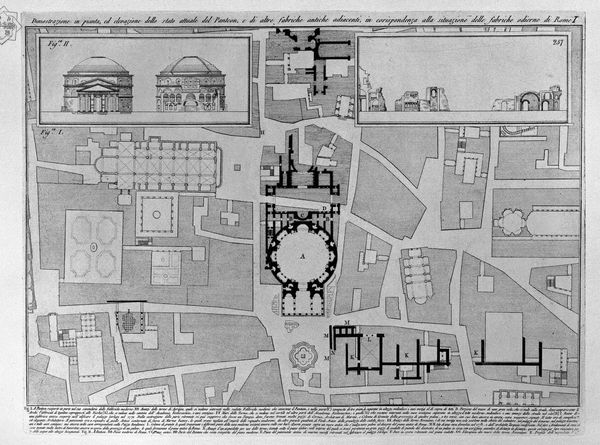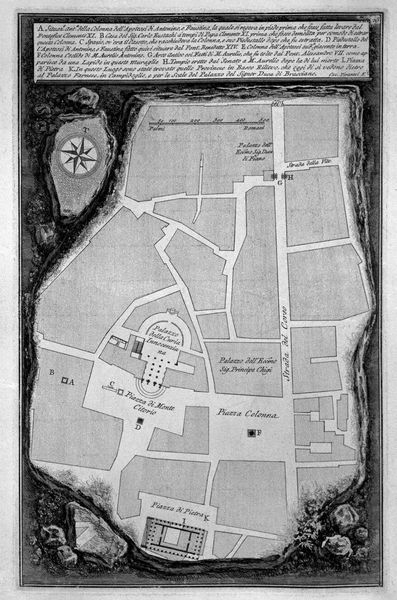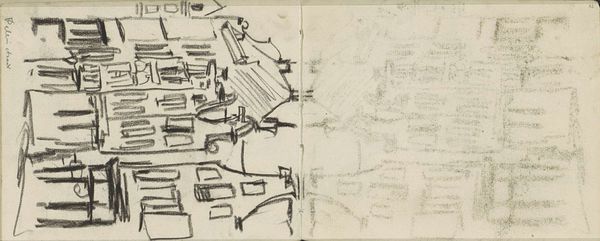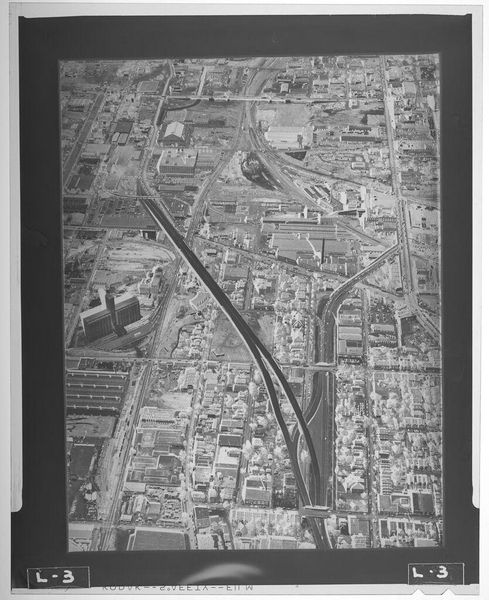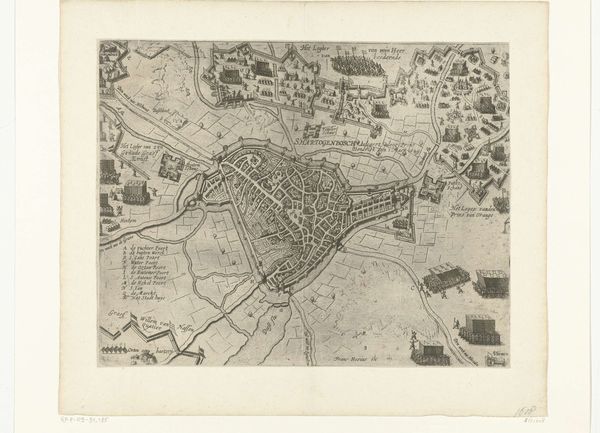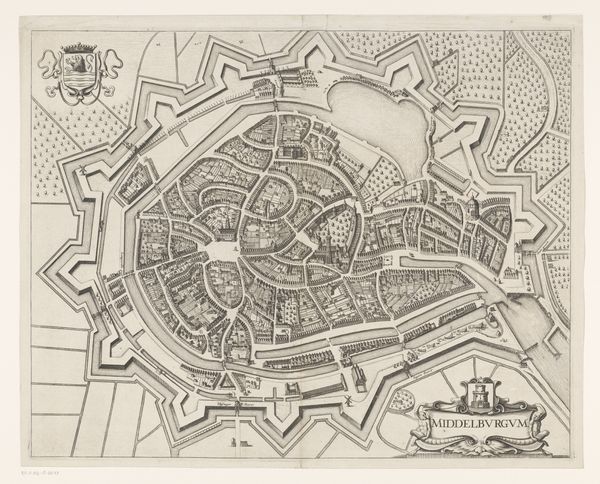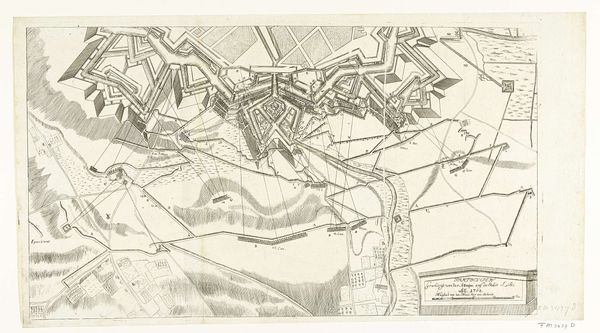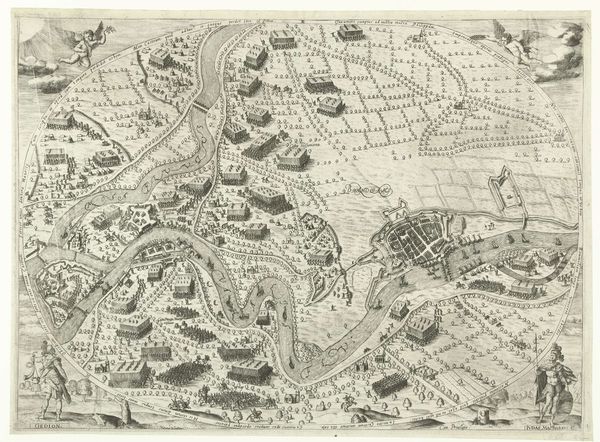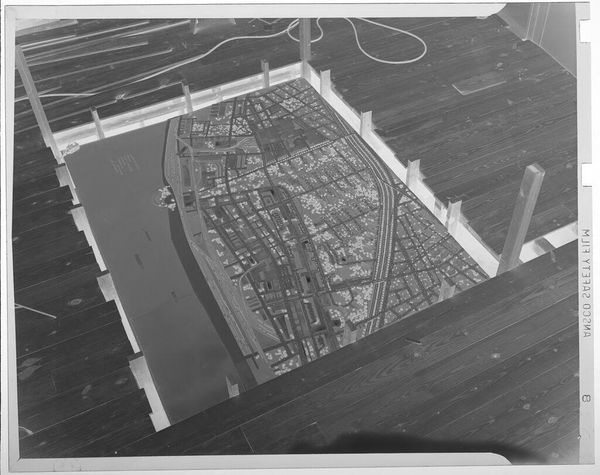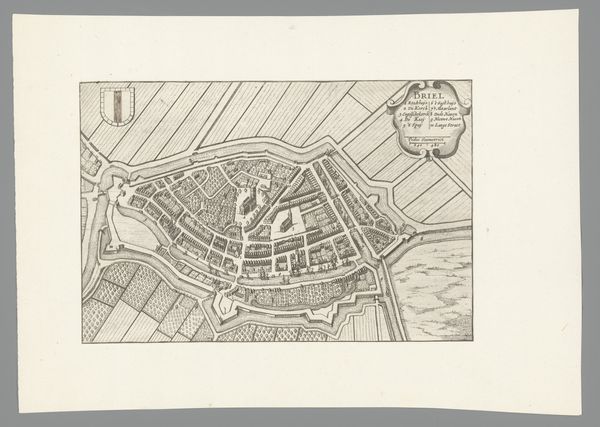
print, engraving
# print
#
text
#
ancient-mediterranean
#
line
#
cityscape
#
history-painting
#
engraving
#
monochrome
Copyright: Public domain
Curator: Here we have an engraving from 1756, plate thirty-eight from Giovanni Battista Piranesi's "The Roman Antiquities." Editor: My initial reaction is that it’s like an architectural ghost. The detail in rendering the lines gives it a precise, almost technical feel, yet it also suggests the fragmented and temporal nature of memory. Curator: That's perceptive. Piranesi was fascinated by Rome's architectural history and legacy. This plate, rendered as a black and white print, aims to present an archaeologically accurate view of the city, mapping ancient ruins and lost structures onto the existing topography. His work certainly fuelled the 18th-century Grand Tour interest. Editor: I’m immediately drawn to the line work, almost like intricate lace laid over the land. I wonder about the physical act of engraving this detailed map. How much labor and skill were involved in producing each plate, each line contributing to the collective image of Rome? It makes me think about the means by which these maps circulated. Curator: Engravings like these played a significant role in shaping the public's understanding of antiquity. By disseminating imagery and architectural information, Piranesi wasn't just documenting; he was actively constructing a particular vision of Rome’s grandeur. The printing press was integral to distributing not just this information but Piranesi's own image as a great historical artist. Editor: True, this form of reproduction speaks volumes about the ambition of his practice and his deep relationship with both labor and material processes. We can even perceive the weight of the printed page in an image like this, imagining it circulated amongst patrons eager to understand the scale and magnificence of a bygone city. Curator: Absolutely. And consider that this representation also carried a political charge. Displaying Rome's former power during a time of its relative decline spoke to national pride, inspiring ideas of renewal. Piranesi contributed actively to this social phenomenon of cultural heritage. Editor: Examining his line and monochromatic composition reminds us how artistry transforms tangible matter into symbols, which further reveals the historical value instilled by its consumers. What an extraordinary thought. Curator: Precisely. Through the convergence of historical document and aesthetic interpretation, Piranesi ensures that antiquity, once unearthed, remains a timeless subject for contemplation.
Comments
No comments
Be the first to comment and join the conversation on the ultimate creative platform.
